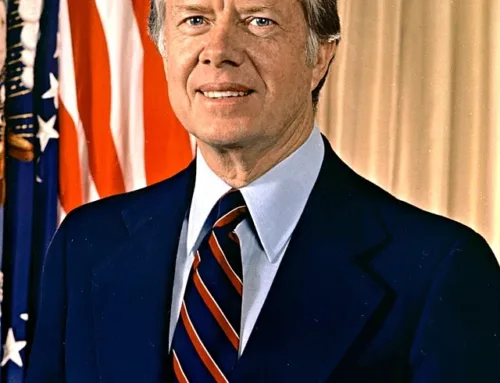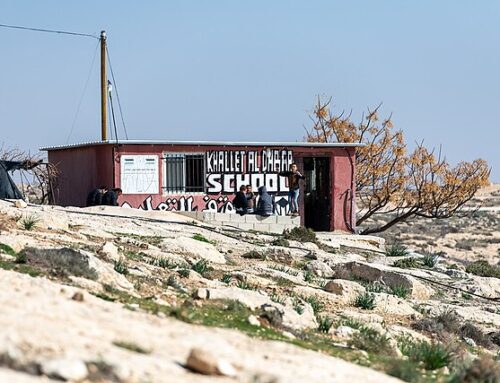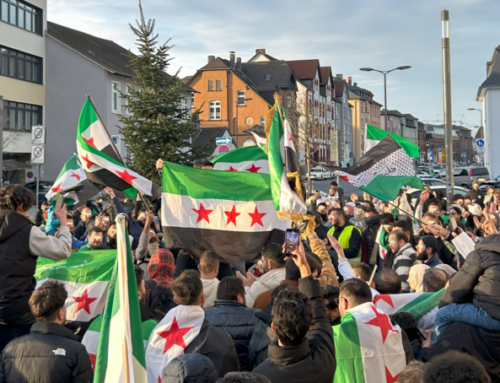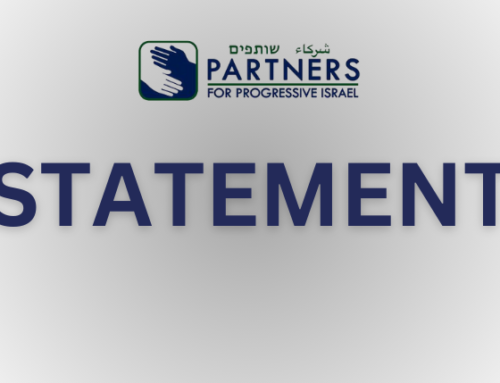 Last Sunday, a band of 60 Israeli irregulars launched a well-planned operation aimed at conquering Jericho – one of the West Bank towns under the control of the Palestinian Authority.
Last Sunday, a band of 60 Israeli irregulars launched a well-planned operation aimed at conquering Jericho – one of the West Bank towns under the control of the Palestinian Authority.
Led by an Israeli Member of Knesset, breaching Israeli military checkpoints and violating Israeli law, the “Youth for the Land of Israel” group cited the presence of an ancient Jewish synagogue in Jericho to justify Israel’s title to the city. The operation, MK Michael Ben-Ari admitted, was part of a broader campaign to have Israel retake the entire West Bank.
After entering the synagogue and hanging an Israeli flag from its roof, the invading force was evicted by Israeli border police, in coordination with Palestinian Authority forces. (Thirty-five were arrested, but – how surprising – soon released.)
Earlier that day, Israeli Prime Minister Binyamin Netanyahu continued his own campaign to promote Israel’s claims to the West Bank. At the start of his Cabinet’s weekly meeting, Netanyahu declared that two sites on the West Bank of Jewish religious/historical importance – Rachel’s Tomb and the Tomb of the Patriarchs – would now be included on Israel’s “national heritage trail”.
In explaining his decision, Netanyahu stressed that Israel needed to do more to “underscore our links” to “the Biblical … Land of Israel”.
Admittedly, these two West Bank sites – in Israeli-controlled sections of Bethlehem and Hebron, respectively – are much more central to Jewish identity than the Jericho synagogue, and they are only a small fraction of the 150 sites named in Netanyahu’s heritage preservation plan. But the philosophical and ideological threads connecting the two developments last Sunday are not hard to find: Both involve an inability to properly distinguish between past and present, between cultural roots and political reality.
Historically speaking, of course, there is no reason to deny the Jewish people’s connection to the areas of “Judea and Samaria”, as the Israeli right prefers to term the West Bank. The Tomb (or “Cave”) of the Patriarchs is customarily regarded as the burial site of three patriarchal/matriarchal couples – Abraham and Sarah, Isaac and Rebecca, and Jacob and Leah – and is considered Judaism’s second holiest site, after only Har HaBayit, the Temple Mount in East Jerusalem.
Rachel’s Tomb is said to be the burial place of the biblical matriarch, Rachel, second wife of Jacob, and is often considered the third holiest site. And many other locales – such as Shilo, Elon Moreh and Tekoa – figure in pre-Exilic Jewish history.
But redeeming “Nachalat Avot” (“the estate of our forefathers”) was never a fundamental aim of either political or cultural Zionism (as opposed to religious Zionism), which sought to achieve a sovereign state where the Jewish people could be free and secure, and bring about a national, cultural renaissance of a Jewish people that was becoming reduced to, and stilted by, religious orthodoxy.
In the days after his announcement, and following heated Palestinian protests and sharp rebuke from the US administration, Netanyahu, the politician, quicklytried to downplay the significance of his remarks – maintaining that he had been “misunderstood” and had not meant to alter the Occupation’s status quo.
Netanyahu’s attempt to backtrack has led officials from within his own security establishment to remark that this newest move was eerily similar to his 1996 misstep as Prime Minister to open the Hasmonean Tunnel. Then, as now, he undertook the decision without consulting them regarding the costly security implications. Haaretz newspaper has rightly suggested in an editorial that wise statesmen avoid problems that clever politicians – such as Mr. Netanyahu – need to solve.
But the larger problem, it seems, is not with Netanyahu’s decision-making, but with his interpretation of Zionism, which seems more akin to that of Rabbi Zvi Yehuda Kook than that of Theodor Herzl or Ahad Ha’Am.
Indeed, even in what is considered the most moderate moment of his political career, Netanyahu revealed his exclusionary Greater Land of Israel colors. Addressing Israel and the world during his Bar-Ilan University speech in June 2009, Netanyahu begrudgingly accepted the idea of a Palestinian state, but stressed his belief that all rights to all the land west of the Jordan River belong to the Jewish people alone:
“The truth is that in the area of our homeland, in the heart of our Jewish Homeland, now lives a large population of Palestinians,” Netanyahu bemoaned, depicting the Jews as landlords and the Palestinians as trespassers claiming squatters’ rights.
It has become something of a cliché recently to claim that the distinctions between left and right in Israel are rapidly disappearing and that all of Israel is converging around a pragmatic, security-oriented center. On a superficial level, that might be true. But when one probes a bit deeper, in terms of how the Zionist movement perceives and defines itself, one sees that the struggle for the soul of Jewish national liberation is still very much alive – almost 113 years after the first World Zionist Congress.
Like the Im Tirtzu movement, Netanyahu claims to speak for a Zionist consensus. He doesn’t, and he never has. And it’s our continuing responsibility as progressive Zionists to say so, so that the Jewish national liberation movement will not be mistaken for what it was never meant to be.
Shabbat Shalom and Hag Purim Same’ach,
Ron Skolnik
Executive Director
Meretz USA






Leave A Comment